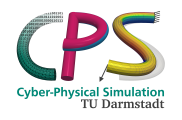Survey on bridging the gap of physics-based modeling and machine learning
2025/07/09
New survey article offers both researchers and engineers a structured overview of the cutting-edge methods in physics-informed ML, underlining their importance for future innovation in science and industry.
The major overview paper “Machine Learning with Physics Knowledge for Prediction: A Survey”, co-authored by scientists from TU Darmstadt, ABB, and other collaborators, was recently published in Transactions on Machine Learning Research, see https://openreview.net/forum?id=ZiJYahyXLU.
This comprehensive survey systematically examines methods that infuse machine learning with physics knowledge, especially focusing on integrating partial differential equations into predictive models. It is organized into two key themes:
1. Architectural integration of physics: embedding physical constraints via structured models, loss functions, and data augmentation.
2. Data-driven physics knowledge: leveraging multi-task, meta-, and contextual learning to treat datasets themselves as conveyors of physical laws.
The paper also highlights an industrial perspective, showcasing real-world applications across sectors like manufacturing, aerospace, automotive, power systems, and climate modeling, alongside a resource-rich open-source ecosystem for physics-informed ML.
Why it matters:
- Scientific rigour meets scalability: Blends robust physical knowledge with flexible ML frameworks, improving reliability even with limited data.
- Broad coverage: From neural operators and PINNs to meta‑learning and contextual modeling—all surveyed and contrasted.
- Industrial relevance: Illuminates how these hybrid techniques drive progress in real-world systems, from predictive maintenance to digital twins.




